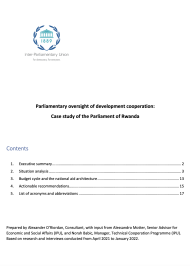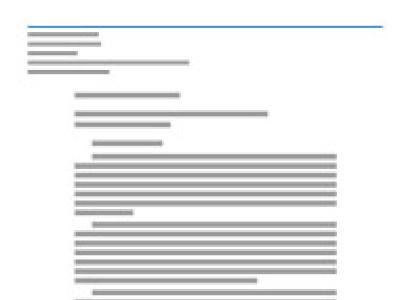
After recovering from the 1994 genocide Rwanda’s leadership has delivered stability, strong and sustained economic growth, and expansion of public services. The parliamentary system comprises two houses in which the proportion of women (61% in the lower house) and youth are amongst the best in the world. Rwanda’s lower house also mandates representatives of the youth and persons with disabilities. The upper house includes two representatives of local universities.
Rwanda scores well on the World Bank’s governance indicators, improving all six indicators since 2010. The government has also put in place all five components considered necessary for mutual accountability. Citizen participation in public budgeting is exemplary, transparency in public financial management systems and use of gender-based budgeting is widely recognized.
However, the international community has not rewarded Rwanda: international development partners make less use of government systems than the average for least developed countries (LDCs). The Global Partnership for Effective Development Co-operation1 (GPEDC) noted in 2018 that the proportion of international development cooperation on budget is sliding: use of Rwanda’s Public Financial Management (PFM) systems has been slashed from 80% in 2016 to 37% in 2018. These significant changes were not discussed with the legislature, implying a gap in accountability to Rwanda’s elected leaders.
Through establishing the Public Accounts Committee, the legislature deepened its relationship with the Office of the Auditor General (OAG), enabling greater oversight of public finances. However, this does not apply for aid spent off budget. Going forward, the legislature’s capacity to analyse and oversee public finances will be improved with the establishment of the Parliamentary Budget Office (PBO).
International development partners are organized and in dialogue with government through a national aid architecture. The aid architecture, though, does not designate an explicit role for the legislature. There are signs of development partner fragmentation and resistance to government oversight such as in the establishment of sector working groups categorized by international development partner priorities rather than the authority of line ministries. Rwanda’s national aid policy dates to 2006: it does not include the latest development effectiveness commitments most notable of which are the commitments to oversight by the legislature as encapsulated in the 2016 Nairobi Outcome.
Most notable of these include updating the national aid policy; taking advantage of the legislatures’ mandated representation of youth, disabled and academia as low-hanging fruit in improving country ownership; evidence and analysis in policy making; making development partner programming aware of parliamentary priorities; and creating space for the legislature to engage development partners on setting country programming priorities.





